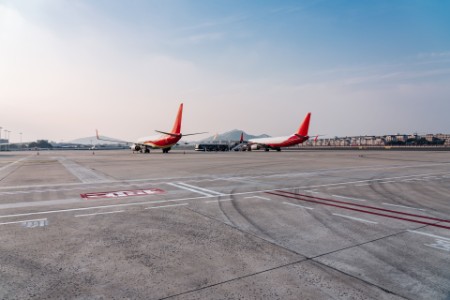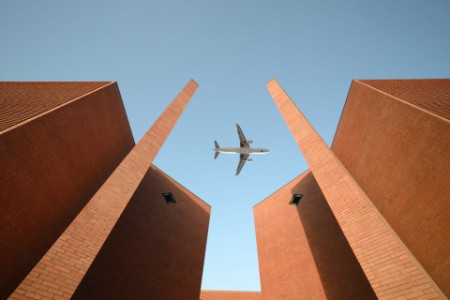How can a grounded business fly high again?
It had seemed like an expansionist success story. Starting out as a one-aircraft operator in China’s southernmost province of Hainan in 1990, HNA became the country’s fourth largest airline after a decade of highly leveraged acquisitions.
The group then expanded just as ambitiously – and incurred comparable levels of debt – in the hotel, tourism, finance and technology sectors. It grew abroad as well as within China, with a string of significantly leveraged acquisitions. These included a large US-listed aircraft, US electronics distributor Ingram Micro, a 25% financial share in the Hilton Group, and the largest financial stake in Deutsche Bank. By 2017, it owned almost 3,000 companies, with assets topping RMB1 trillion.
But by early 2020 the financial pressure of billions of dollars of debt left HNA Group starved of cash. COVID-19 and the global travel freeze was the final blow. With the group unable to pay creditors, or many of its 100,000 employees, Hainan’s provincial government established a joint working group to assess the conglomerate’s assets and liabilities, simplify its shareholdings and restructure the business. The working group, made up of representatives from the provincial government, the civil aviation authority and China Development Bank, concluded that bankruptcy was the best way to save the group.
Over the next two years, a multi-party team – including members from the provincial government, creditors, HNA Group and EY China – worked tirelessly to breathe new life into the group. It was a significant challenge.
Yongmin Yuan, EY China Head of Turnaround and Restructuring Strategy, says: “HNA Group was a giant conglomerate with sprawling subsidiaries in a complex shareholding structure, engaged in extensive businesses with diversified assets located worldwide.”

Landmark decisions set a clear course for future success
The bankruptcy restructuring programme was the world’s third biggest ever. It involved four simultaneous cases: three for the listed airlines, airports and commercial entities, and the other covering 321 HNA Group Chinese subsidiaries.
The administrators – which included EY China – made a number of landmark decisions during the restructuring process. To start, they chose the collective insolvency procedure bankruptcy route for the 321 Chinese subsidiaries, which judged them as one entity. This avoided the complexity and cost of separating out the interconnected businesses.
The inclusion of EY in the administrators’ team reflected the value and breadth of its support for the HNA Group during the immediate pre-restructuring period. Generally, major, large-scale Chinese restructurings do not make accountancy businesses administrators, relying more on legal firms.
The debt restructuring plans got the legal go-ahead in China and Europe, along with approval from 90% of creditors. This was the first time the EU had recognized a bankruptcy reorganization sanctioned by a Mainland China court. The conglomerate was then divided into four independently listed entities – aviation, airport, commercial and financial – designed to deliver optimum synergies between the group’s different businesses.
Streamlining for sustainable growth
HNA Group’s vast portfolio of companies was streamlined to focus on its core air industry businesses. This included selling Ingram Micro to global M&A firm Platinum Equity for US$5.9 billion, enabling M&A loans and debts to be repaid and expenses reduced.
To get the business in the best shape for sustainable growth, it was tailored to fit the evolving market. HNA Group’s airport operations, for example, were honed to concentrate on airports, duty-free business and airport-related infrastructure construction. This decision mirrored new opportunities arising in Hainan, one of China’s largest free-trade ports.
The province is opening its airports to more international flights and introducing lower, simpler tariffs and taxes, including an increase in the duty-free allowance. Reflecting a wider real estate slump, the airport entity wound down its sale of undeveloped land around its two Hainan airports.
EY China took measures to settle the debt crisis, improve the efficiency of asset utilization, and safeguard the effective operations of the HNA Group.
In December 2021, the aviation entity was transferred to strategic investor Liaoning Fangda Group Industrial and the airport entity to its strategic investor, state-owned Hainan Development Holding Co., Ltd. Both strategic investors took full control of their respective entities, with creditors holding minority shares. Strategic investors are being sought for the commercial and financial entities. The group of 321 Chinese subsidiaries, which is owned by creditors, has been renamed Hainan HNA No.1 and No.2 Information Management Service Co., Ltd., and now owns the HNA Group’s former overseas assets.
In April 2022, just six months after creditors sanctioned the restructuring, the ambitious international programme was complete. The HNA Group had been slimmed down from an ailing international conglomerate with more than 2,000 companies to a streamlined entity focusing on hotels, finance (including insurance), commercial activity (primarily department stores) and logistics.
Delivering to a nine-month deadline
EY China was an integral part of the multi-party group that moved HNA Group businesses from crisis to recovery. The complexity of the restructuring is reflected in its broad remit. The 400-strong EY team – which included professionals from the Turnaround and Restructuring Strategy, Assurance, Tax, Forensic & Integrity Services practices – undertook such activity as:
- Working with creditors to establish whether the HNA Group was a going concern, when the debt crisis first became apparent
- Advising on the restructuring of assets, liabilities and shareholdings and the disposal of assets
- Providing working capital advisory services to help HNA Group adapt its business and operational policies to release cash
- Implementing business and management restructuring, paving the way for better operations and profitability
- Monitoring group spending and operations, as creditors exercised their legal right to manage HNA Group assets
- Acting as a communications bridge between numerous stakeholders, and so helping to achieve the strong mandate for the restructuring plans
- Recruiting fitting strategic investors, with a targeted communication campaign and due diligence programmes
To complete the extremely complex restructuring within nine months, as required in China, the EY team often worked long hours, seven days a week to get the job done. York Zheng, Partner, Turnaround and Restructuring Strategy, Ernst & Young (China) Advisory Limited, says: “The administrators encountered multiple challenges, in tax, law, operation, cash monitoring and so on. EY China took measures to settle the debt crisis, improve the efficiency of asset utilization, and safeguard the effective operations of the HNA Group.”
Zheng identified four major challenges:
- The complexity of restructuring three listed businesses and the 321 other China-based HNA Group businesses within just nine months.
- Communicating with and getting buy-in from the HNA Group’s 60,000 creditors who – reflecting its assets – were spread around the world.
- The risk that arrears in payments to flight crews and suppliers could impair the safety and airworthiness of group flights. The chance of negligence or industrial action by staff was allayed by engaging them in regular briefings on the goals and progress of the restructuring
- The need to untangle the tens of thousands of transactions between the HNA Group’s 2,000 companies.

Swift completion of restructuring created certainty and stability
The restructuring of the HNA Group delivered significant benefits for the business and wider society, both in China and internationally.
The swift identification of assets and liabilities and the rapid legal approval of the restructuring plans meant strategic investors quickly had the information they needed to inject funds into the business. This resulted in creditor debts being serviced swiftly. Likewise, the completion of the restructuring program just six months after it received legal and creditor approval gave all HNA Group’s stakeholders stability and certainty.
EY’s integrated team and its seamless services are enabling the whole restructuring process to be done very efficiently and are creating huge value.
Significantly, none of HNA Group’s 100,000 employees lost their jobs due to the pandemic and the success of the Group’s restructuring has meant that more than 2,000 companies in over 10 countries have avoided needing to close down. Those whose salary was in arrears during the debt crisis received their back pay and, with prospects bright for the HNA Group’s businesses and the wider region, employees are facing a positive future.
Maggie Cui, Partner, Turnaround and Restructuring Strategy, Ernst & Young (China) Advisory Limited, says: "We were intensely aware that the reorganization of the HNA Group was not just an engagement; it was vital for regional economic stability and social security. In restructuring and turning around the group, we made every endeavour to preserve its value and navigate it through the crisis.”
HNA management says: “The HNA restructuring is an enormously complicated project. EY’s integrated team and its seamless services are enabling the whole restructuring process to be done very efficiently and are creating huge value.”
The work of EY teams has also been commended by HNA creditors. China Development Bank, which chairs the debt committee, says: “EY has provided strong and professional audit, advisory and debt restructuring services. This has contributed important value to the smooth restructuring of HNA and to the realization of a multi-win situation.”
The Export-Import Bank of China, one of the leading HNA Group creditors, adds: “As one of the HNA restructuring administrators, EY has demonstrated very solid financial expertise and has always provided timely feedback and valuable advice. We appreciate their hard work and dedication.”
The team
Contact us
Like what you’ve seen? Get in touch to learn more.


